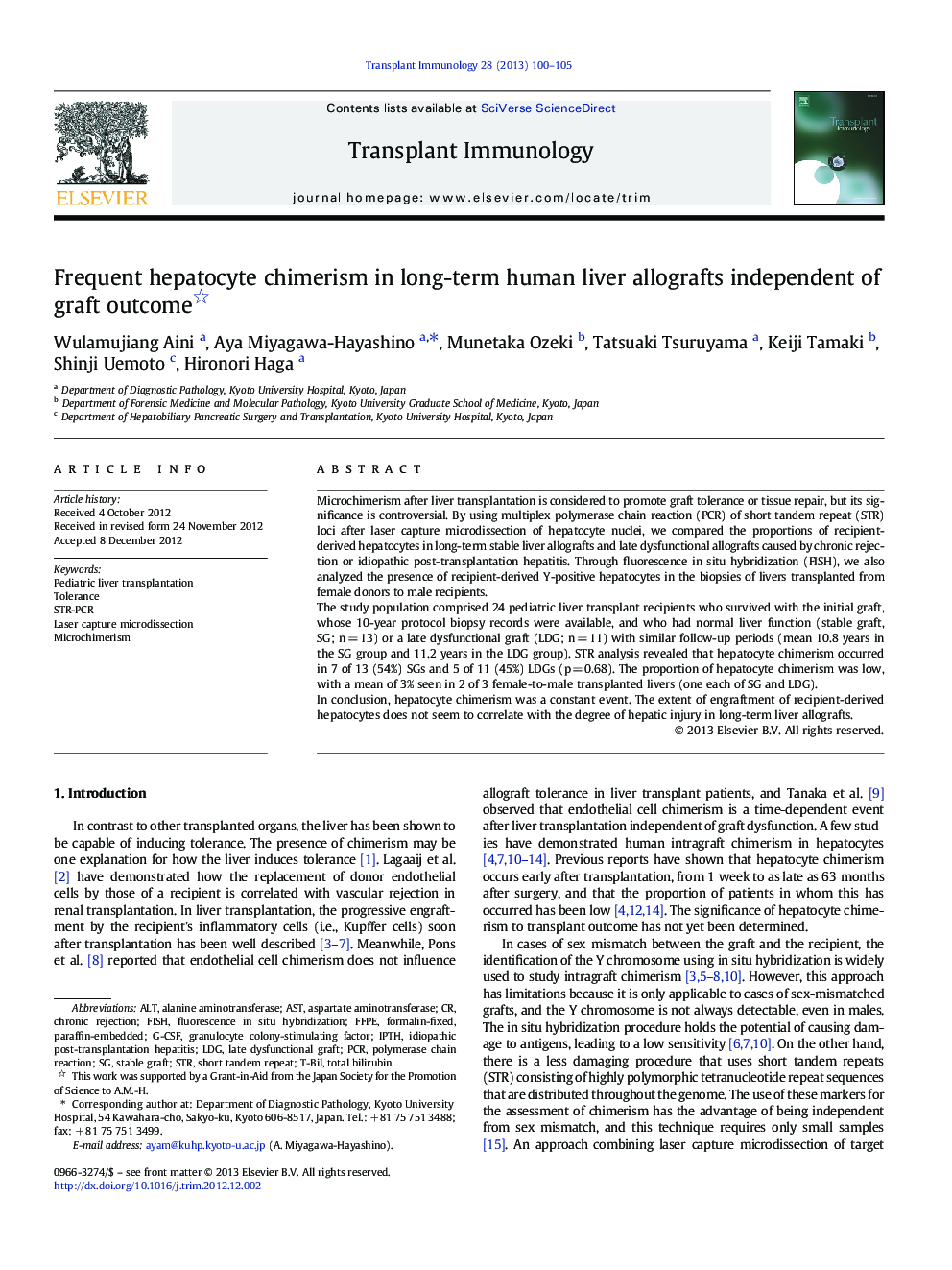| کد مقاله | کد نشریه | سال انتشار | مقاله انگلیسی | نسخه تمام متن |
|---|---|---|---|---|
| 3392157 | 1592678 | 2013 | 6 صفحه PDF | دانلود رایگان |

Microchimerism after liver transplantation is considered to promote graft tolerance or tissue repair, but its significance is controversial. By using multiplex polymerase chain reaction (PCR) of short tandem repeat (STR) loci after laser capture microdissection of hepatocyte nuclei, we compared the proportions of recipient-derived hepatocytes in long-term stable liver allografts and late dysfunctional allografts caused by chronic rejection or idiopathic post-transplantation hepatitis. Through fluorescence in situ hybridization (FISH), we also analyzed the presence of recipient-derived Y-positive hepatocytes in the biopsies of livers transplanted from female donors to male recipients.The study population comprised 24 pediatric liver transplant recipients who survived with the initial graft, whose 10-year protocol biopsy records were available, and who had normal liver function (stable graft, SG; n = 13) or a late dysfunctional graft (LDG; n = 11) with similar follow-up periods (mean 10.8 years in the SG group and 11.2 years in the LDG group). STR analysis revealed that hepatocyte chimerism occurred in 7 of 13 (54%) SGs and 5 of 11 (45%) LDGs (p = 0.68). The proportion of hepatocyte chimerism was low, with a mean of 3% seen in 2 of 3 female-to-male transplanted livers (one each of SG and LDG).In conclusion, hepatocyte chimerism was a constant event. The extent of engraftment of recipient-derived hepatocytes does not seem to correlate with the degree of hepatic injury in long-term liver allografts.
Journal: Transplant Immunology - Volume 28, Issues 2–3, March 2013, Pages 100–105